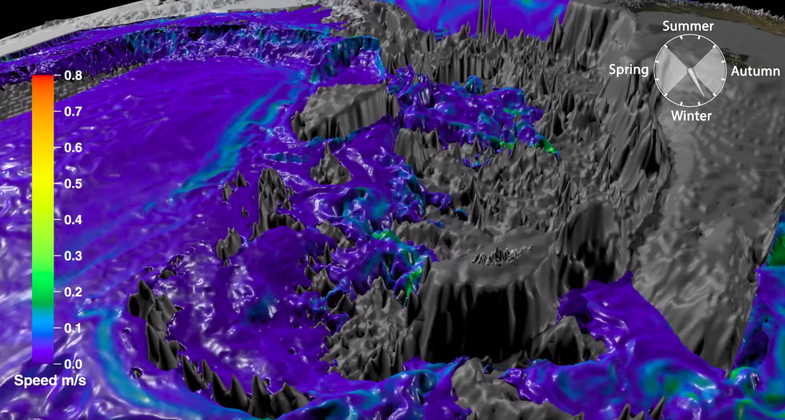See How Antartica’s Hidden Water Drives The World’s Oceans
This is not the brine you are looking for


We tend to think of the ocean as a vast bowl, filled with salty water. But it might be more appropriate to think of that water as a particularly salty layer dip in an uneven baking dish.
The very bottom layer of this “dip” is unevenly concentrated at one end of the ocean basin, near Antarctica. This layer of water is known, fittingly, as bottom water. It forms near the surface, as Antarctica’s ice shelves freeze in the winter. The water that freezes pushes out many salt particles, shoving them deeper into the ocean, making the water below the ice shelf denser and saltier. This cold, salty water sinks to the bottom of the Southern Ocean, falling into the abyss in underwater waterfalls.
The formation and movement of Antarctic bottom water is hugely important for ocean circulation, but because Antarctica is a difficult place to work, scientists have a hard time observing it directly.
Thankfully, they have computers to help. Researchers at the Australian Research Council’s Centre of Excellence for Climate System Science used a supercomputer called Raijin to create simulations of how bottom water behaves using data collected in the field. Even with a supercomputer, it took 7 hours to produce one second of the above footage.
“Scientists who have seen the visualization have been astonished at the level of detail,” one of the creators of the animation, Andy Hogg said in a statement.”But this visualization is about more than communicating the wonder of science to the public. Being able to actually see how the bottom water moves in three dimensions rather than just looking at numerical, two dimensional outputs has already opened new areas for scientific research.”
Some of those areas include climate change research. Scientists think that bottom water is a key component of climate change research. Because it forms near the surface, it can pull carbon dioxide and heat from the atmosphere into the ocean. More research is needed to discover how changes to the cycle might affect our planet.
Check out the animation above.